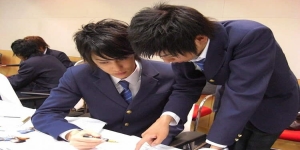Inemuri 居眠り and Nemuri-Jin the Japanese "Sleepers" of Folklore and the "Sleepers" of Today

In Japanese folklore, there are numerous stories and legends about strange and mysterious creatures. One such creature is the "Nemuri", also known as the "Nemuri-jin" or "Sleeper". This fascinating character is the protagonist of stories that are rooted in Japanese culture and tradition, arousing curiosity and wonder among readers.
The term "Nemuri" comes from the Japanese word "nemuru", which means "to sleep". Nemuri-jin are human beings endowed with an extraordinary power: the ability to remain asleep for extended periods, even for centuries. Their ability to sleep for so long is the distinguishing feature that makes them unique and charming.
These legends of "sleepers" are told in various Japanese stories and literary works. One of the best-known short stories is "Nemuri Kyoshiro 眠 狂四郎", a samurai novel written by Renzaburo Shibata 柴田錬三郎. This popular adventure novel is set during the Edo period (1603-1868) and chronicles the adventures of Kyoshiro Nemuri, a ronin - a masterless samurai - with the power to fall asleep at will, using this ability to protect himself and others. Another famous work featuring the Nemuri-jin is "Nemuri no Fuchi" (of which there is also a manga transposition), a fantastic story written by Ango Sakaguchi. This story explores the themes of loneliness, rebirth and eternity, where a character sleeps for centuries, waking up to a completely changed world.
Nemuri-jin are not just creatures of fantasy; their presence in Japanese stories holds deep meanings. So much so that we see ample examples of it even in modern and less folkloristic Japan.
Inemuri is rooted in Japanese culture, where the concept of respect for the time and space of others is deeply engraved. Sleeping openly during a meeting or conference, for example, might be considered rude in some cultures, but it is seen in Japan as a sign of intense commitment and dedication to work. For those who put themselves through long hours of work, taking a short rest through inemuri is considered a way to recharge their batteries and continue to be productive.

It is so ingrained as a concept that we tried to classify it in the forms we assume when we fall asleep (Japanese madness ahaha):
"Hizamakura" (懐枕): This is a common form where the person leans on the desk or a support, such as a bag or briefcase, and rests the head on the arms or hands. This allows you to take a quick nap while maintaining a more "alert" posture.
"Manaita Nemuri" (まな板眠り): takes a nap sitting cross-legged or on a stool, with the head bowed downwards. Even in this position, the person remains "alert" and can immediately resume activities.
"Kneel-down Nemuri" (跪き眠り): This type of inemuri involves a person kneeling on the floor and resting their head on an object or on their knees. This position is also an accepted form of public napping in Japanese culture.
For those who have been to Japan it will surely have happened to come across these people and think (which they combine), well! Now you know what they are called and why they behave like this.
Photo Credits
Tokyo Times
turningjapanese

 English (United Kingdom)
English (United Kingdom)  Italiano (it-IT)
Italiano (it-IT) 


![[Review] Princess Toyotomiプリンセス トヨトミ](https://www.fukainihon.org//cache/mod_jt_contentslider/fdfb524f85518b9476158c79c8ea022f_328.jpg)


